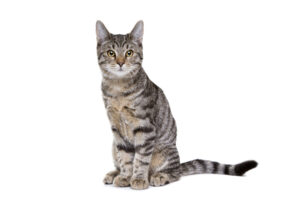
It’s common for a cat to hesitate to show pain symptoms, which is why it’s important to watch them closely so you catch problems early.
Cats are somewhat infamous for masking pain. In the wild, cats use this strategy to protect themselves from appearing vulnerable to predators. In a home, their wild instinct to hide their pain can make it difficult for owners to know when their cat is suffering and whether they need to see a veterinarian for medical intervention. There are several ways to determine whether your cat is showing pain symptoms.
Abnormal Behavior
One of the most telling signs that your cat may be in pain is abnormal behavior. If your cat starts acting in a way that is not normal for them, it is often a sign that they should be taken in to see their primary veterinarian for a check-up to find out why their behavior has changed. This is very common in cats that are experiencing pain, but the changes can be subtle and will be most easily noticed by human family members—especially those that spend the most time with the cat. Catching these changes early and seeing a vet as soon as possible can keep your cat’s condition from worsening.
Changes in Appetite
A reluctance to eat or drink is almost always a sign of trouble when it comes to our pets, and your cat is no exception. If their appetite has taken a downturn, they could be dealing with significant pain that needs to be addressed immediately. Keeping a close eye on their food and water bowls every day will ensure that the issue is caught early and you can seek help right away.
Unusual Grooming
Of the different pain symptoms, grooming issues can take a bit longer to notice. Your cat may groom themselves significantly less or stop grooming altogether, causing their coat to become dirty and matted over time. In contrast, they may also overgroom a sensitive area and create irritated, bald patches. This symptom might not be apparent right away, but it’s definitely a reason to see your vet once it becomes a noticeable issue.
Aggression
Some cats may have a level of aggression that is normal for them—they may be intolerant of being held or hiss and growl at other animals or strange people. When they’re in pain, however, cats will often experience an unusual rise in aggression—hissing, growling, and even purring during interactions they would normally enjoy or react to differently. A rise in aggression is a way for cats to get others to back off because they’re feeling scared or vulnerable.
Vocalizing
Excessive vocalization is another pain symptom to consider. For quiet cats, this is an easy change to spot. However, for normally vocal cats, human family members will begin to notice that they’re vocalizing at unusual times or significantly more than normal. In this case, the change might not be obvious at first.
Trust Maryland Veterinary Surgical Services With Your Companion’s Health
Your companion’s health is important, and the team at MVSS is ready to provide the best care possible for your furry family. We are dedicated to combining comprehensive exams and assessments with informative and honest discussions of your companion’s care. Once we have worked with you to decide on the best course of action for your dog, our professionals will use their surgical expertise to work towards the goal of giving your companion an active and pain-free life. We are proud to serve loyal companions in Catonsville and Baltimore. To learn more about our services, give us a call at 410-788-4088 or visit us online. For more information and tips for pet health, follow us on Facebook and Pinterest.
